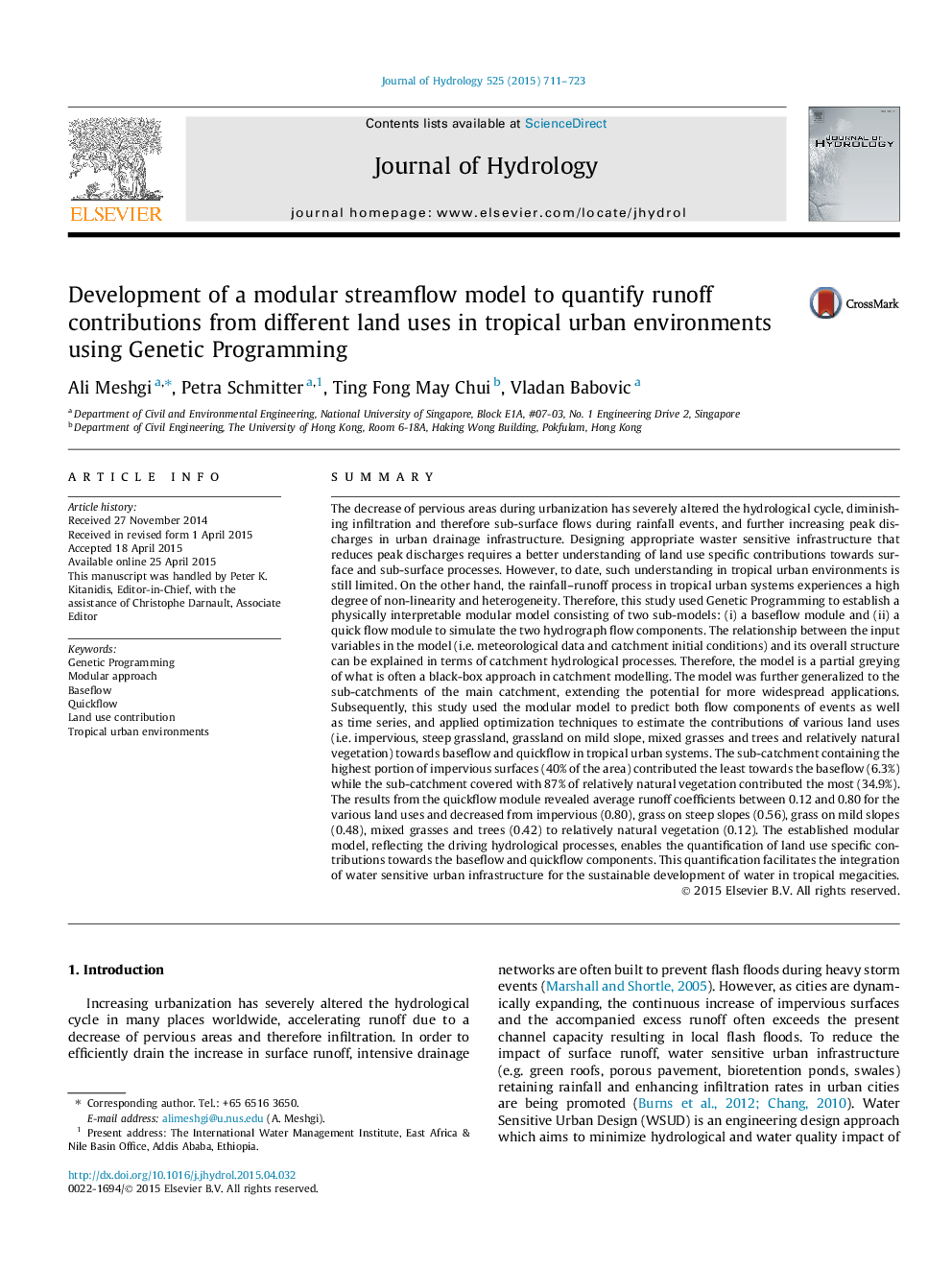| کد مقاله | کد نشریه | سال انتشار | مقاله انگلیسی | نسخه تمام متن |
|---|---|---|---|---|
| 6410674 | 1629925 | 2015 | 13 صفحه PDF | دانلود رایگان |
- A modular streamflow model was developed using Genetic Programming.
- The model consists of two modules, one for baseflow and the other for quickflow.
- The model was generalized to predict each process at sub-catchment and catchment levels.
- The model was used to quantify quickflow contributions from different land uses.
SummaryThe decrease of pervious areas during urbanization has severely altered the hydrological cycle, diminishing infiltration and therefore sub-surface flows during rainfall events, and further increasing peak discharges in urban drainage infrastructure. Designing appropriate waster sensitive infrastructure that reduces peak discharges requires a better understanding of land use specific contributions towards surface and sub-surface processes. However, to date, such understanding in tropical urban environments is still limited. On the other hand, the rainfall-runoff process in tropical urban systems experiences a high degree of non-linearity and heterogeneity. Therefore, this study used Genetic Programming to establish a physically interpretable modular model consisting of two sub-models: (i) a baseflow module and (ii) a quick flow module to simulate the two hydrograph flow components. The relationship between the input variables in the model (i.e. meteorological data and catchment initial conditions) and its overall structure can be explained in terms of catchment hydrological processes. Therefore, the model is a partial greying of what is often a black-box approach in catchment modelling. The model was further generalized to the sub-catchments of the main catchment, extending the potential for more widespread applications. Subsequently, this study used the modular model to predict both flow components of events as well as time series, and applied optimization techniques to estimate the contributions of various land uses (i.e. impervious, steep grassland, grassland on mild slope, mixed grasses and trees and relatively natural vegetation) towards baseflow and quickflow in tropical urban systems. The sub-catchment containing the highest portion of impervious surfaces (40% of the area) contributed the least towards the baseflow (6.3%) while the sub-catchment covered with 87% of relatively natural vegetation contributed the most (34.9%). The results from the quickflow module revealed average runoff coefficients between 0.12 and 0.80 for the various land uses and decreased from impervious (0.80), grass on steep slopes (0.56), grass on mild slopes (0.48), mixed grasses and trees (0.42) to relatively natural vegetation (0.12). The established modular model, reflecting the driving hydrological processes, enables the quantification of land use specific contributions towards the baseflow and quickflow components. This quantification facilitates the integration of water sensitive urban infrastructure for the sustainable development of water in tropical megacities.
Journal: Journal of Hydrology - Volume 525, June 2015, Pages 711-723
